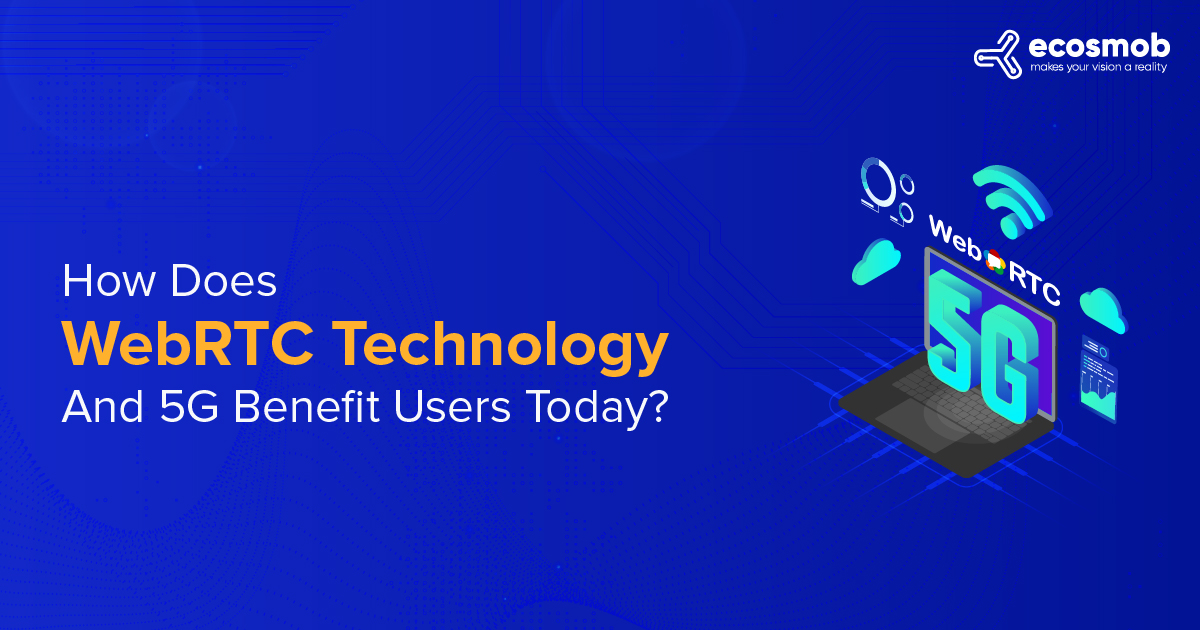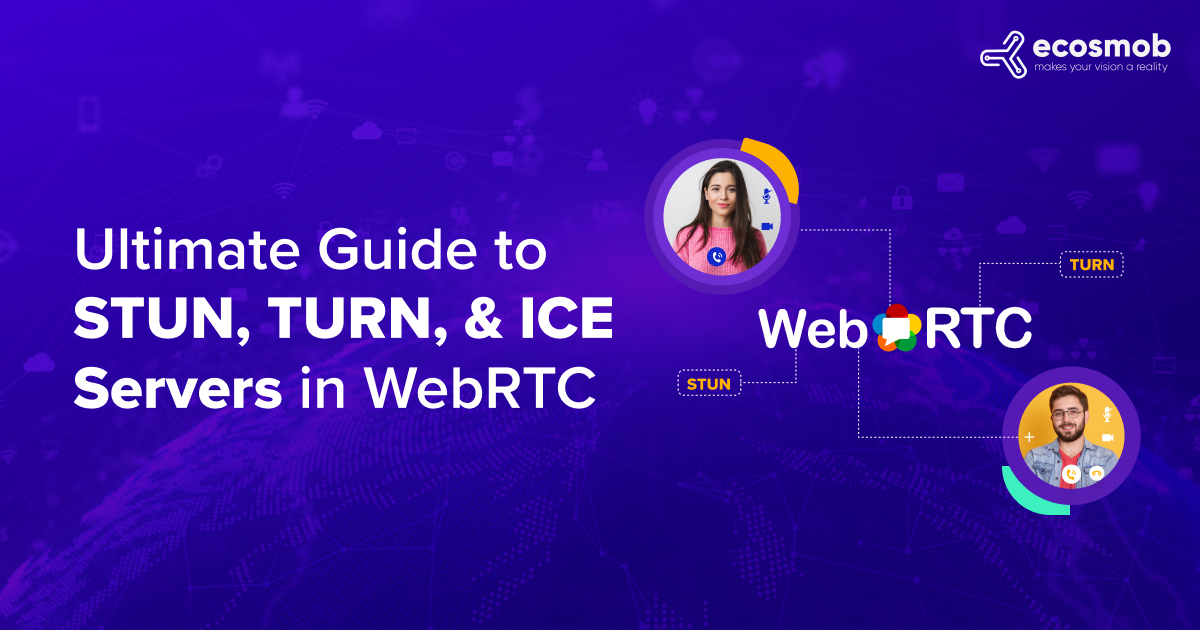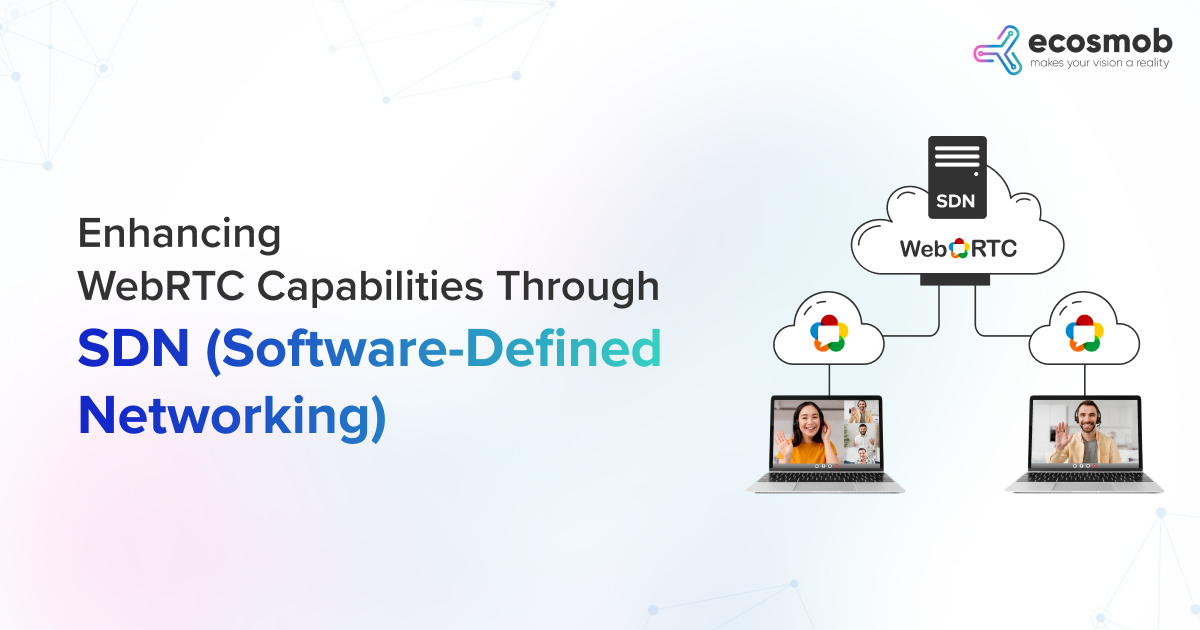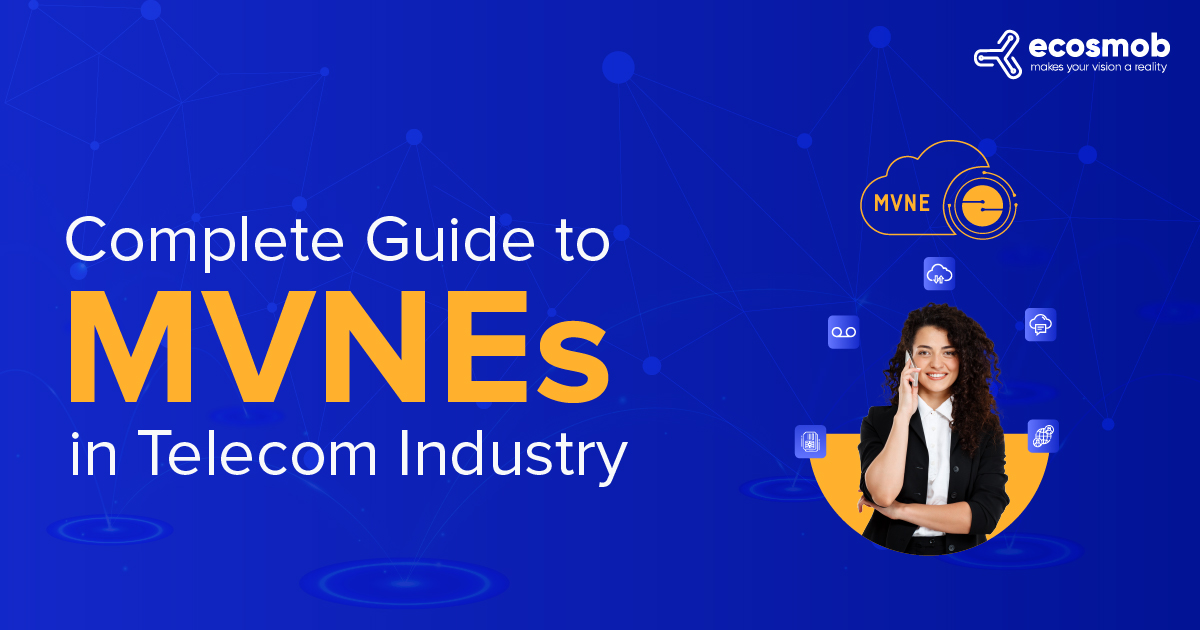The official start of the 5G network era begins this year. Mobile operators can leverage WebRTC technology in 5G Networks as complementary to IMS(IP Multimedia Subsystem). By exposing their custom WebRTC development services to more customers and client devices, mobile operators could increase the functionality of their IMS-based infrastructures. Since real-time peer-to-peer communication is now supported natively by all modern browsers, WebRTC offers the advantage of being implemented through a web browser rather than a separate client application or plug-in.
With a long history of developing systems for person-to-person communication, Ecosmob participated in the early stages of custom WebRTC development to help the technology develop for usage in various web browsers, mobile apps, and fixed situations. Now that WebRTC is a recognized international standard, everyone has access to a solid platform for creating and providing multiple communication solutions. We are currently moving forward with implementing WebRTC on 5G networks. This blog will discuss how WebRTC technology and 5G benefit users today. But first, let’s understand in detail what WebRTC is.
What Is WebRTC?
WebRTC (Web Real-Time Communication) is an open-source project that enables real-time web communication without needing additional software or plugins. It allows for voice and video calls, text messaging, and file sharing directly within a web browser or mobile application.
WebRTC technology uses a peer-to-peer connection between two devices, eliminating the need for a central server or intermediary. The W3C and IETF standardization committees declared WebRTC technology an official standard in January 2021, after several companies working on its development over the previous years.

Image Source: Ericsson
As shown in the above figure, in a basic one-to-one communication scenario, the microphone, camera, and screen are used as inputs for audio and video that stream to another browser for playback on the screen and loudspeakers. It’s all under the control of the web application.
A network needs more conference nodes to handle complicated scenarios, such as multi-party or one-to-many communication. Note that WebRTC is also widely utilized in applications for mobile phones and desktop computers that are not browser-based.
Also Read: An In-depth Guide to WebRTC Development
WebRTC Technology Compatibility with 5G Networks
WebRTC technology for 5G mobile networks is currently being deployed and is starting to affect people’s daily lives. WebRTC services delivered over 5G, however, are probably going to gain from advancements like:
- Minimal latency
- Considerably more bandwidth
- Extreme dependability
- Guaranteed privacy, identity, security, and trustworthiness
For instance, 5G makes it possible to use WebRTC technology for person-to-person or person-to-group UHD (Ultra High Definition) mobile video communication.
Expand Your Business With WebRTC Solutions
How Does WebRTC Technology Benefit in 5G Networks?
WebRTC technology has been around for a few years but has only recently begun to be widely adopted and utilized by users. Here are a few ways in which users benefit from WebRTC today:
Real-Time Communication
WebRTC technology allows for real-time communication between users, whether it’s through video or audio. It means that users can converse with someone else in real time without any lag or delay. WebRTC benefits remote work or online education, allowing for a more natural and engaging communication experience.
Low Latency
WebRTC mainly designs to have low latency, which means that there is minimal delay between when a user speaks or acts and when the other user sees or hears it. WebRTC technology is essential for applications such as online gaming, where low latency is crucial for a smooth and responsive experience.
Easy To Use
WebRTC designs are easy to use, with minimal setup and configuration required. Users need a web browser that supports WebRTC technology to start communicating with others in real time. It makes it accessible to many users, regardless of their technical expertise.
Increased Security
WebRTC uses end-to-end encryption to protect communication between users. Only the intended parties can access it, providing a higher level of protection for sensitive conversations.
Cost-Effective
WebRTC technology is an open-source technology, which means that it is free to use. It is a cost-effective option for businesses and individuals looking to implement real-time communication in their applications or WebRTC development services.
Improved Video And Audio Quality
WebRTC technology uses advanced compression and encoding techniques to deliver real-time high-quality video and audio streams. It means that users can enjoy clear and smooth communication without any lag or buffering issues.
Versatility
WebRTC technology is used for various communication scenarios, such as video conferencing, instant messaging, and file sharing. This versatility makes it a valuable tool for both personal and business use.
Cross-Platform Compatibility
WebRTC is supported by most major web browsers and mobile platforms, making it easy for users to communicate with others regardless of their device.
Overall, WebRTC technology is robust, making real-time communication accessible and engaging for users. It is being adopted in a wide range of applications, from remote work to online gaming, and is making it easier for people to stay connected with each other.
Don’t Miss This Related Post: Enhancing WebRTC Capabilities Through SDN
How Can WebRTC Provide Interactive Calling In 5G Networks?
WebRTC (Web Real-Time Communication) technology allows real-time communication between web browsers without additional software or plug-ins. WebRTC technology has been gaining popularity recently and is now used to develop new solutions for interactive calling.
An example of a WebRTC-based solution
Taking advantage of 5G and WebRTC technology is the Virtual Reality (VR) calling feature. This feature allows users to make virtual reality calls and experience a more immersive and realistic communication experience. Users can interact with each other in real-time, as if they were in the same room, even when they are physically far apart.
Another example of a solution leveraging 5G and WebRTC technology is augmented reality (AR) in video conferencing. AR allows users to overlay digital information on their real-world surroundings, enhancing the communication experience. For example, users can use AR to share documents or presentations during a call without physically sharing the same screen.
5G and WebRTC-based solutions are more accessible to a broader range of users. With faster and more reliable connections, users in remote or rural areas can now access high-quality video and audio calling services, which was impossible before.
Ecosmob’s WebRTC-Based Solutions and 5G Interactive Calling
One of the most exciting custom WebRTC development is the integration of WebRTC and 5G technology. With 5G networks, users can experience faster data speeds and more reliable connections, which means that WebRTC-based services can deliver even more seamless and high-quality video and audio calling.
Ecosmob has begun creating solutions for WebRTC development service providers using the advantages of WebRTC technology to enable them to provide new phone, video, and collaboration services for their consumer and business clients. It would be best if you bought the initial solutions on the open market shortly.
5G Voice-Based Interactive Calling
To prepare for 5G voice, we are also trying to enhance the 4G mobile voice service, which builds on VoLTE. IMS (IP Multimedia Subsystem) use is for both 4G and 5G voice, and we have now codified the “IMS data channel” idea in the 3GPP 5G version 16 standard. Both the IMS data channel and the WebRTC data channel are interoperable and share the same protocol stack.
WebRTC industry collaboration with infrastructure vendors and WebRTC development service provider business growth with their enterprise customers are necessary to deploy 5G voice-based interactive calling use cases in commercial services.
Additionally, it needs the advantages of WebRTC and 5G voice coverage. It is a chance for the telecom sector to take advantage of the existing base of IMS-based mobile telephony networks, add value with 5G networks, and eventually enable interactive calling services.
Wrapping Up
WebRTC is a global standard that has dramatically improved our online communication. As 5G networks become more prevalent, we expect to see more exciting new applications and use cases for this powerful technology. In the future, with faster speeds and lower latency, WebRTC technology will enable even more real-time, interactive applications. Additionally, 5G networks will allow WebRTC technology to use in new ways, such as in virtual and augmented reality applications.

















